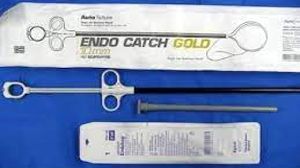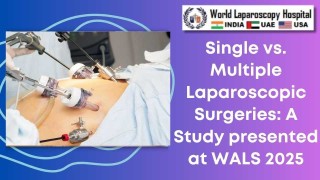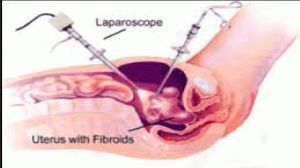Vaginal Part of Laparoscopic Assisted Vaginal Hysterectomy
Add to
Share
275 views
Report
2 months ago
Description
Laparoscopic Assisted Vaginal Hysterectomy (LAVH) is a minimally invasive surgical technique that combines the advantages of laparoscopy with the traditional vaginal hysterectomy approach. This hybrid procedure allows for better visualization of pelvic structures, reduced surgical trauma, and quicker postoperative recovery. The vaginal part of LAVH plays a crucial role in the completion of the hysterectomy, following the laparoscopic mobilization of the uterus and adnexa. Steps in the Vaginal Part of LAVH: Vaginal Access and Exposure After laparoscopic dissection, the surgeon proceeds to the vaginal phase. A proper vaginal incision is made using a circular or semicircular approach at the cervicovaginal junction. Vaginal retractors are used to expose the surgical field adequately, ensuring safe access to the uterosacral and cardinal ligaments. Mobilization of the Uterus The previously dissected ligaments, vessels, and adhesions are carefully released. The vaginal phase allows for the final separation of the uterus from its vaginal attachments. The uterus is gently delivered through the vaginal canal. Hemostasis and Suturing Vaginal blood vessels are ligated and cauterized to ensure hemostasis. The vaginal cuff is sutured meticulously to prevent postoperative complications such as vault prolapse or bleeding. Absorbable sutures are preferred to reduce the risk of infection and promote healing. Inspection and Completion The pelvic cavity is inspected laparoscopically to confirm complete removal of the uterus and adnexa if indicated. Any residual bleeding or tissue is managed promptly. The vaginal vault is checked, and the procedure is concluded. Advantages of the Vaginal Part in LAVH: Reduced Abdominal Trauma: The vaginal extraction eliminates the need for a larger abdominal incision. Improved Recovery: Patients typically experience less postoperative pain and faster return to normal activities. Enhanced Safety: The combination of laparoscopic visualization and vaginal access allows safer dissection around vital structures like the bladder and ureters. Versatility: This approach is suitable for large uteri, fibroids, and cases with mild adhesions. Key Considerations: Adequate preoperative evaluation is essential to assess vaginal accessibility and uterine size. Surgeons must be skilled in both laparoscopic and vaginal surgical techniques. Careful ligament and vascular management reduces complications such as hemorrhage or ureteral injury. Conclusion: The vaginal part of Laparoscopic Assisted Vaginal Hysterectomy is integral to the procedure’s success. It combines minimally invasive techniques with traditional vaginal access, ensuring safer uterine removal, faster recovery, and minimal postoperative morbidity. When performed correctly, it offers patients the benefits of both laparoscopic precision and vaginal convenience.
Similar Videos






